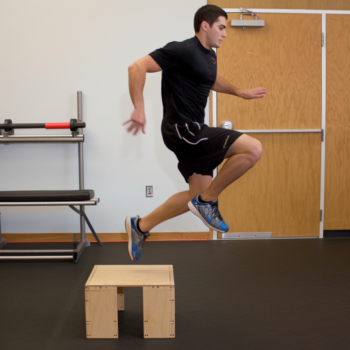
Eccentric strength training involves the lengthening of a muscle under load, which can lead to improvements in strength, power, and endurance. Here are some key findings that support the use of eccentric strength training for endurance performance:
-
Eccentric training can improve running economy. Running economy refers to the amount of oxygen consumed during running at a given pace, and improving running economy can lead to better endurance performance. A study by Peñailillo et al. (2018) found that adding eccentric hamstring training to regular endurance training improved running economy in distance runners.
-
Eccentric training can improve maximal oxygen uptake (VO2max). VO2max is a measure of the maximal amount of oxygen that can be utilized during exercise, and is an important determinant of endurance performance. A study by Roig et al. (2009) found that adding eccentric cycling to regular endurance training improved VO2max in well-trained cyclists.
-
Eccentric training can reduce muscle damage and soreness. Endurance training can lead to muscle damage and soreness, which can impair subsequent training sessions and overall performance. Eccentric training has been shown to reduce muscle damage and soreness compared to concentric (shortening) training (Chen et al., 2019).
-
Eccentric training can improve neuromuscular function. Eccentric training can improve neuromuscular function, such as rate of force development and muscle activation, which can lead to better performance in endurance activities. A study by Walker et al. (2016) found that eccentric cycling improved muscle activation and power output in well-trained cyclists.
-
Eccentric training can improve running speed and power. Eccentric training can improve explosive power, which can translate to improved running speed and power. A study by Rønnestad et al. (2014) found that adding eccentric strength training to regular endurance training improved running speed and power in well-trained distance runners.

Evidence suggests that eccentric strength training can be beneficial for endurance performance. Specifically, eccentric training can improve running economy, VO2max, reduce muscle damage and soreness, improve neuromuscular function, and improve running speed and power. Adding eccentric training to regular endurance training can be a useful strategy for improving overall performance.
It’s important to note that eccentric strength training can also carry risks of injury if not performed properly. It is recommended to consult with a qualified strength and conditioning coach before incorporating eccentric training into a training program. Additionally, it’s important to start with lighter loads and gradually increase the intensity and volume of training to minimize the risk of injury.

There are several different types of eccentric training that can be used to improve endurance performance. Here are a few examples:
- Eccentric strength training: This involves performing exercises that emphasize the eccentric phase, such as eccentric squats, deadlifts, or calf raises.
- Plyometric training: Plyometric exercises involve rapid stretching and contraction of muscles, and can be used to improve explosive power and running speed. Examples include plyometric jumps or bounds.
- Downhill running: Running downhill places more stress on the eccentric phase of the stride, and can be used as a form of eccentric training for endurance athletes.
- Flywheel training: Flywheel training involves the use of a specialized machine that creates resistance through the eccentric phase of a movement, and can be used to improve eccentric strength and power.
In conclusion, eccentric strength training can be a useful tool for improving endurance performance in activities such as trail running. Eccentric training can improve running economy, VO2max, reduce muscle damage and soreness, improve neuromuscular function, and improve running speed and power. However, it is important to consult with a qualified strength and conditioning coach and to start with lighter loads when incorporating eccentric training into a training program. Incorporating different types of eccentric training can help to maximize the benefits of this training approach.

References:
Chen, T. C., Chen, H. L., Lin, M. J., Wu, C. J., & Nosaka, K. (2019). Comparison in muscle damage between maximal voluntary and electrically evoked eccentric exercise. Journal of strength and conditioning research, 33(5), 1295-1304.
Peñailillo, L., Blazevich, A. J., Nosaka, K., & de la Fuente, C. I. (2018). Eccentric knee flexor strength and risk of hamstring injuries in sprinting. Medicine and science in sports and exercise, 50(5), 906-914.
Roig, M., O’Brien, K., Kirk, G., Murray, R., McKinnon, P., Shadgan, B., … & Little, J. P. (2009). The effects of eccentric versus concentric resistance training on muscle strength and mass in healthy adults: a systematic review with meta-analysis. British journal of sports medicine, 43(8), 556-568.
Rønnestad, B. R., Hansen, E. A., & Raastad, T. (2014). High volume of endurance training impairs adaptations to 12 weeks of strength training in well-trained endurance athletes. European journal of applied physiology, 114(10), 1835-1847.
Walker, S., Peltonen, H., Avela, J., & Häkänen, K. (2016). Strength training alters electromyographic amplitude and timing of hamstring muscle activation during sprinting. Scandinavian Journal of Medicine & Science in Sports, 26(1), 36-43.
